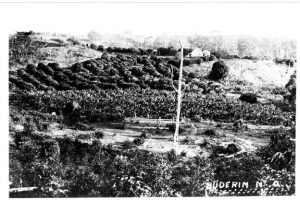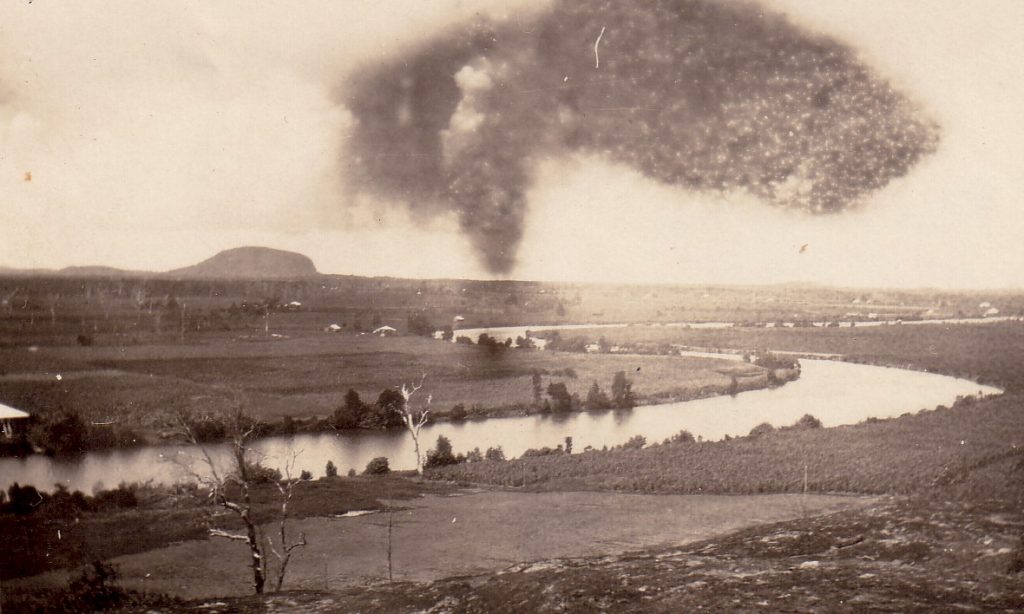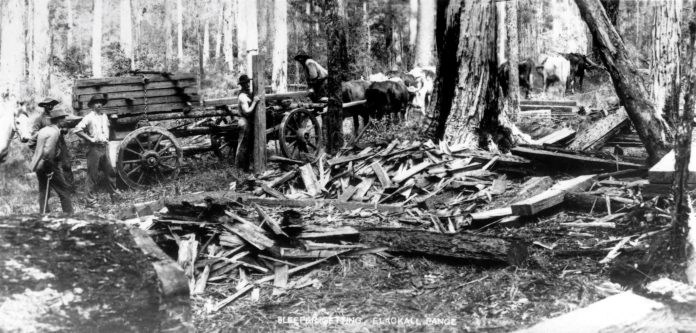First there was timber, then came dairies, rich and fertile orchards and cane farms – primary production was the backbone of the Sunshine Coast.
They called the timber “red gold” and cutters and hauliers, the first men to cut tracks up the slopes of the Blackall Range in search of cedar, were well rewarded.
Timber getting was first recorded in the Government Gazette of 1864.
In Maleny, cedar logs were taken down the range and hauled either to James Campbell’s sawmill at Coochin Creek and on to Brisbane, or to Bribie Passage for transport to Sydney and Melbourne.
In Montville, logging of cedar, beech and pine was its first industry. Timber was transported down the range by “chutes”. Logs were pushed from the escarpment and then transported by bullocks and later, when the Palmwoods line was completed, by train.
Help keep independent and fair Sunshine Coast news coming by subscribing to our free daily news feed. All it requires is your name and email. See SUBSCRIBE at the top of this article
In the early 1880s, men began arriving in Mapleton in search of softwood timber which would be rafted along the Maroochy River and milled in Brisbane.
Red cedar, beech, hoop and bunya pines were hauled to the range edge, and slid over the side and hauled by bullock teams to the Maroochy and other rivers for shipment to Brisbane.
A large cedar on Frank Dunlop’s selection at Maleny gained worldwide fame when it won a prize in the Franco-British Exhibition in London in 1908. The log had a circumference of 627cm.
A combined team of 60 bullocks was used to haul the log up the steep Walker’s Pinch. It was sent to London and there cut lengthways into equal parts. One half was polished for exhibition and is still housed in a London museum.

When timber stocks were exhausted, the cleared land soon produced bountiful fruit orchards.
By the turn of the century, bananas, citrus and pineapples were being cultivated from the range to Buderim.
The pineapple and citrus industries were the mainstay of the local economy for more than half of the 20th century. Bulk loading of fruit at Palmwoods and Woombye led the state between 1961 and 1972.
Meanwhile, in Nambour, the Moreton Central Sugar Mill Company had been formed in December 1894. It opened for crushing in 1897, and a year later, the first cane tramline was built in Howard Street.
Cane was brought in from Valdora through Bli Bli to Sippy Downs and the canefires created a memorable spectacle during the harvesting season through Spring and into December.

Nambour became the lifeblood of the region and from a small settlement rose to become the capital of what would be the Sunshine Coast.
The mill closed in 2003, the last of the sugar cane farms were turned over to real estate or other ventures and the hinterland conceded that the economy was now based on the commercial enterprises of the coast.
This flashback is brought to you by veteran Sunshine Coast journalist and history writer Dot Whittington, also the editor of Your Time Magazine.





